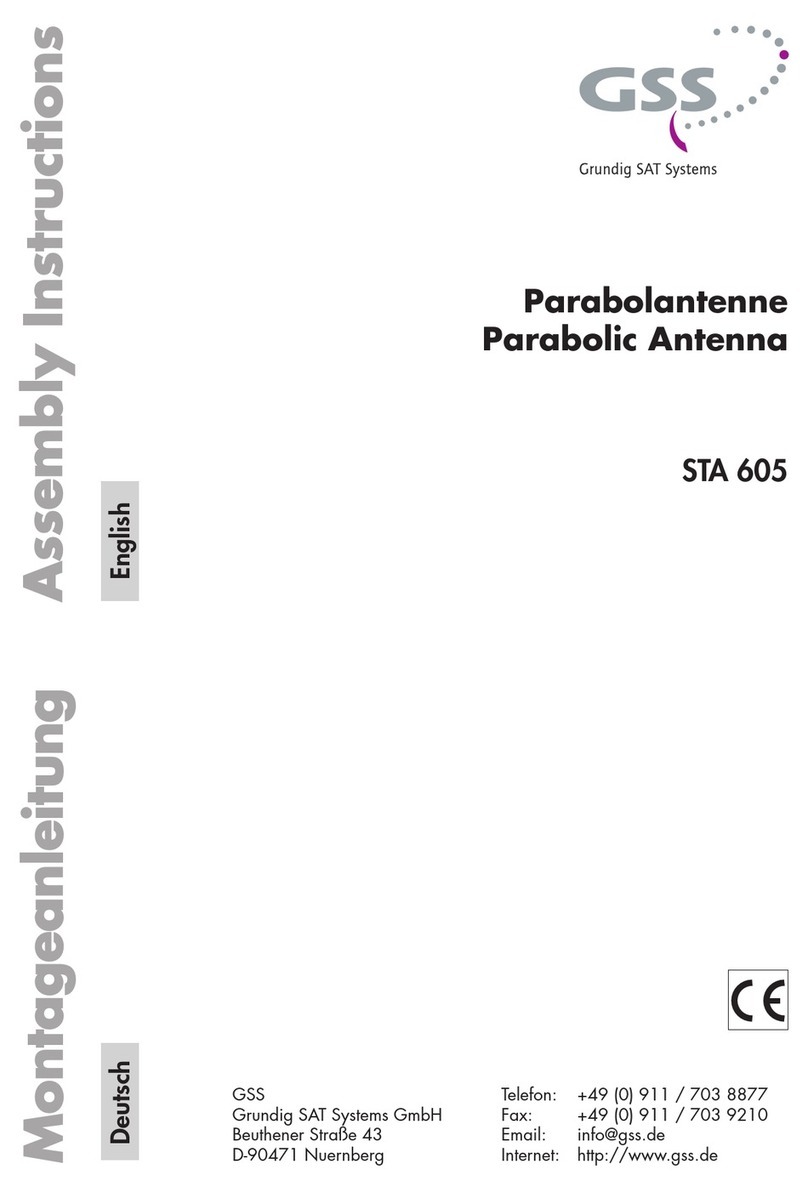
- 6 -
tened through the bracket Bwith the
screws C.
•Fasten the screws Cwith the nuts D
loosely.
3.4 Assembling the parabolic antenna
– To ensure good reception, make
sure there are no obstacles po-
sitioned between the parabolic
antenna and the satellite, such as
trees, houses etc.
– Assemble the antenna mast or the wall
bracket in an upright position other-
wise problems could arise when align-
ing the parabolic antenna.
– For mounting the parabolic antenna
on the roof, use a suitable steel pole or
mast with a thickness of at least 2 mm
and an appropriate diameter to the
parabolic antenna mast holder.
– Make sure when mounting the mast
that at least 1/6of the whole mast
length is clamped.
– When attaching the antenna mast on
a wooden beam, use the required
clamps and a mast stand, and screws
with a diameter of at least 8 mm.
Heavy-duty dowels must be used for
attaching to brickwork.
– Earth the antenna mast according to
the guidelines.
– We recommend using the wall brack-
ets for the parabolic antenna when
mounting on the wall (see website
“http://www.gss.de”).
ter Amit den durch den Haltebügel
Bgesteckten Schrauben Cbefestigt
werden kann.
•Schrauben Cmit den zugehörigen
Muttern Dnur leicht befestigen.
3.4 Parabolantenne montieren
– Um einen guten Empfang sicher-
zustellen, beachten Sie, dass sich
keine Hindernisse zwischen der
Parabolantenne und dem jeweiligen
Satelliten befinden (z.B. Bäume, Häu-
ser etc.).
– Montieren Sie den Antennenmast oder
die Wandhalterung senkrecht, da es
sonst Probleme beim Ausrichten der
Parabolantenne geben kann.
– Verwenden Sie für die Dachmontage
der Parabolantenne geeignete Stahl-
rohre oder Masten mit einer Wandstär-
ke von mindestens 2 mm und einem
dem Masthalter der Parabolantenne
entsprechenden Durchmesser.
– Beachten Sie bei der Mastmontage,
dass mindestens 1/6 der Gesamtlänge
des Masts eingespannt sein muss.
– Verwenden Sie für die Befestigung
des Antennenmasts an Holzbalken
die erforderlichen Schellen bzw. ei-
nen Mastfuß und Schrauben mit einem
Mindestdurchmesser von 8 mm. Für
die Befestigung an Mauerwerk müssen
Schwerlastdübel verwendet werden.
– Antennenmast gemäß den relevanten
Vorschriften erden.
– Für die Wandmontage empfehlen wir
die der Parabolantenne entsprechen-
de Wandhalterung (s. Webseite
”http://www.gss.de”).




























